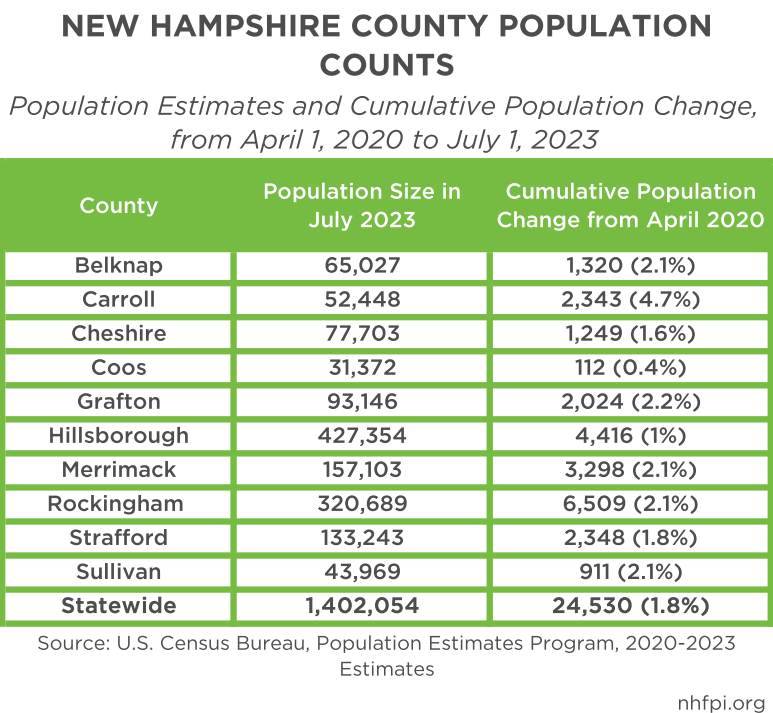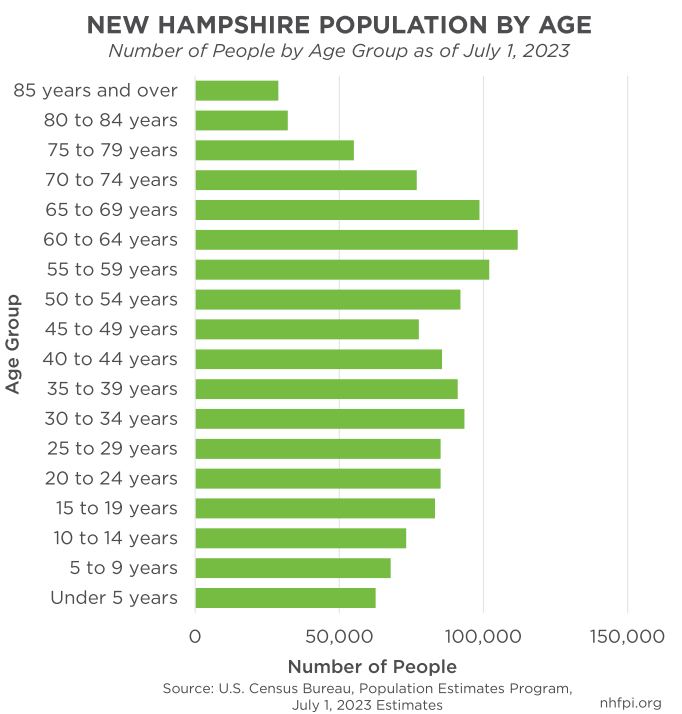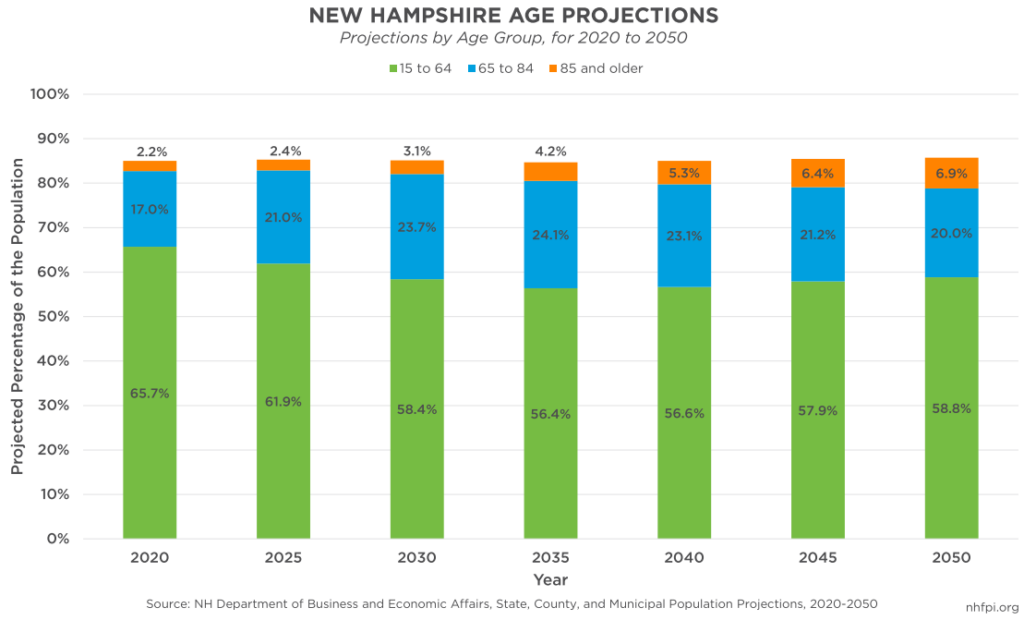Recent population growth in New Hampshire has been driven by in-migration, including among younger adults, and the state’s population is both aging and becoming more diverse. Data from the U.S. Census Bureau provide insights into changes in the New Hampshire population has changed, and enhance understanding of the implicates of these changes for the state’s future economy and workforce.
A Changing Population
New Hampshire’s population increased each year throughout the current decade so far. The most recently published U.S. Census Bureau state-level population estimates suggest the state’s population was 1,402,054 people on July 1, 2023, an increase of about 6.5 percent from the estimated population of 1,316,762 on July 1, 2010.
As of July 2023, the median age in New Hampshire was 43.4 years old, tied with Vermont as the second oldest state in the United States by median age, behind only Maine (44.8 years). Based on population estimates from July 2023, approximately 20.8 percent of the state’s population was over the age of 65. In contrast, those under the age of 18 made up about 18.0 percent of the population in 2023.
Based on population estimates from July 2023, 88.5 percent of the total population identified as white non-Hispanic. Those identifying as Hispanic or Latino of any race made up 4.8 percent of the population; Asian, 3.1 percent; Black, 2.1 percent; American Indian or Alaska Native, 0.3 percent; Native Hawaiian or Pacific Islander, 0.06 percent; and Biracial or Multiracial, 1.9 percent. While those identifying with a racial or ethnic minority made up smaller percentages of the population, the number of individuals identifying as such has increased since July 2020.
In-Migration Driving Population Growth
Net migration to New Hampshire was responsible for the entirety of estimated population growth between 2020 and 2023. From April 1, 2020 to July 1, 2023, the state experienced a population change of approximately 24,530 people. During this period, there were 6,603 more deaths than births in the state, but New Hampshire had a net population gain of around 30,472 people through migration into the state.
In-migration from other New England states, particularly Massachusetts, has driven increases in domestic migration since 2018. In 2021 and 2022 combined, New Hampshire’s population grew by about 25,468 due to net migration from Massachusetts, while there was a net loss of about 6,488 people to Maine.
Although New Hampshire’s population is aging overall, many younger people have moved to the state in recent years. From 2018 to 2022, working age adults comprised about 76.8 percent of all migrants to the state.
Implications for the workforce
The aging population has significant implications for the state’s workforce and larger economy, as more working-age adults will be reaching retirement age over the next decade. Granite Staters age 55 and older comprised about 30 percent of the state’s workforce in April 2024. The percentage of the population aged 15 through 64 is expected to continue to decline through 2050. A higher population of older adults may impact service needs, including health care delivery services and needs from family members who may have to limit workforce participation to provide care.
To learn more, see NHFPI’s August 2024 Issue Brief New Hampshire’s Growing Population and Changing Demographics Before and Since the COVID-19 Pandemic.




